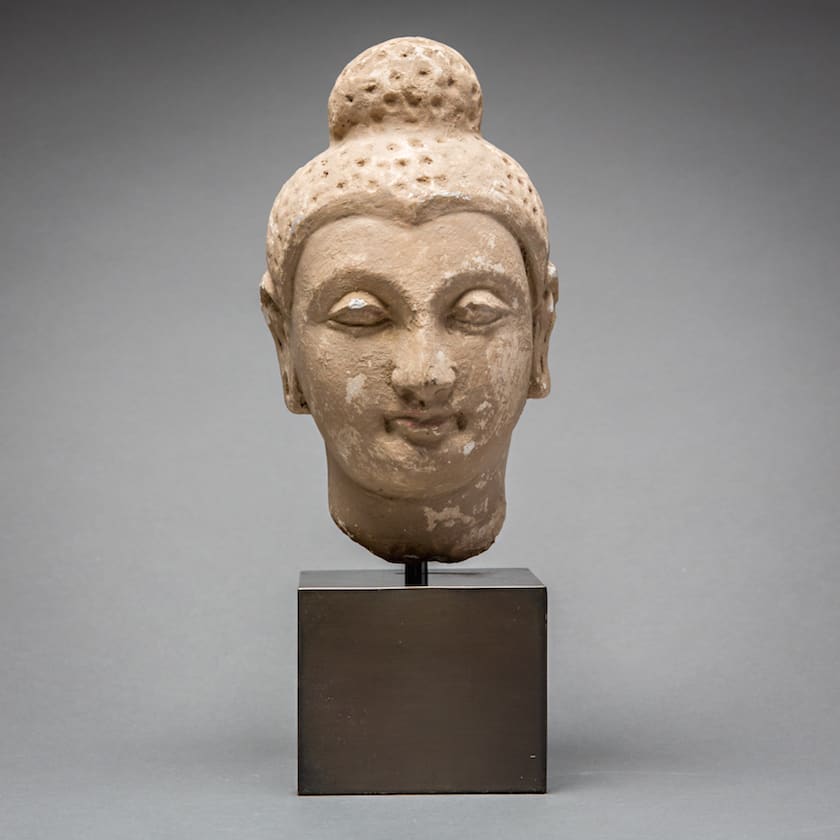Gandharan Stucco Buddha Head, 100 CE - 300 CE
Stucco
height 16.5 cm
height 6 1/2 in
height 6 1/2 in
AM.0217
Further images
According to tradition Buddhism was first introduced into the Gandharan region under the patronage of Asoka, emperor of the Mauryan dynasty, in the third century B.C. The first significant physical...
According to tradition Buddhism was first introduced into the Gandharan region under the patronage of Asoka, emperor of the Mauryan dynasty, in the third century B.C. The first significant physical remains to survive, including stupas and figurative sculpture, date from the first century B.C. Gandhara was situated at the crossroads between east and west and thus came under a wide variety of artistic influences including Persian, Greek and Indian. It also became an important pilgrimage site for Buddhists from across Asia as it was claimed that events from the Buddha’s former lives had occurred in the area.
This small buddha head dates to the most prolific and vibrant era of Gandharan Buddhist art. Stucco and terracotta were favoured materials as they were easy to manipulate and suited to the application of polychromy. Although the majority of surviving works have lost their original colours, this was an essential part of their original conception. Traces of red pigment survive on the Buddha’s lips, as well as traces of black in the eyes. The hair has been modelled using small irregular indentations. The top-knot, or ushnisha, is a symbol of the Buddha’s spiritual wisdom. The elongated earlobes refer to the Buddha’s former material wealth which he renounced in order to achieve spiritual fulfilment.
This small buddha head dates to the most prolific and vibrant era of Gandharan Buddhist art. Stucco and terracotta were favoured materials as they were easy to manipulate and suited to the application of polychromy. Although the majority of surviving works have lost their original colours, this was an essential part of their original conception. Traces of red pigment survive on the Buddha’s lips, as well as traces of black in the eyes. The hair has been modelled using small irregular indentations. The top-knot, or ushnisha, is a symbol of the Buddha’s spiritual wisdom. The elongated earlobes refer to the Buddha’s former material wealth which he renounced in order to achieve spiritual fulfilment.







